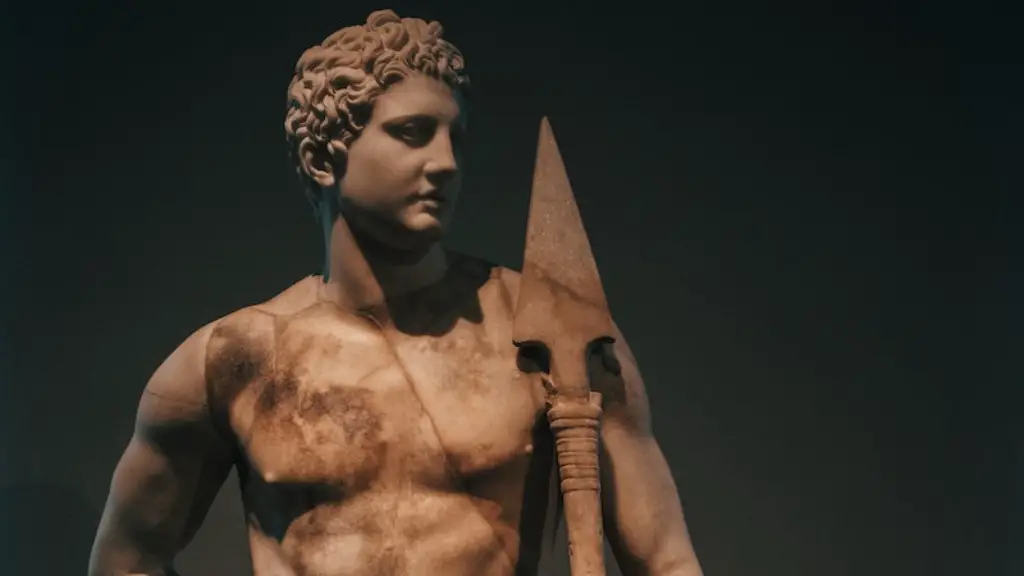Everyday Life
The general lifestyle of a typical Roman family living in Ancient Rome during the 1st century AD was structured around the roles of the father, mother, and children. The father, or paterfamilias, was the head of the house. He had authority over all of the family’s members and possessions. His wife, the materfamilias, was responsible for the household and keeping it in order.
Children in ancient Rome had a high valued place in the family, although there was a difference between the rights of a son and those of a daughter. When a son come of age, usually around 14 years old, he was considered to be an adult in the Roman citizen class and was able to conduct his own business, vote and defend himself in court. Daughters were often considered to be the property of their fathers and not given the same rights as their brothers.
Most of the homes in ancient Rome were simple and small. Some of the wealthier citizens had homes that had more than one story and featured decorative decorations such as wall paintings, marble floors and large colonnades. These bigger buildings were still cramped however and most were made of brick or stone but some were made of wood. They were small, often consisting of only two or three rooms and a courtyard. Additionally, those with more money may have added a garden or a shop to their living space.
Work and leisure activities were very much at the forefront of Ancient Roman life. Labor was both a necessity and a privilege, with men typically had jobs in trades such as carpentry, masonry, and mining. Women normally stayed at home and took care of the family, although they could also own their own businesses. Leisure activities such as theatre performances, chariot racing, and visiting public baths were popular activities during this time period.
Food and Drinks
Members of Ancient Roman society enjoyed a wide variety of foods and drinks. The staples of the average Roman diet were bread and porridge, supplemented with fruits and vegetables, legumes, eggs, and honey. Meat was a luxury, typically consumed in small amounts by the lower classes while wealthier citizens would feast on birds, game, fish, and shellfish.
Drinking was a major part of Roman life and it was common for people of all classes to regularly consume wine and beer. The wealthier classes would usually enjoy expensive, higher-quality wines. Popular drinks like Falernian, Caecuba and Setinum were served at banquets and feasts to show off their wealth.
It is important to note that although drinking was prevalent, Roman society emphasized moderation and control. Although drunkenness was not usually socially acceptable, the Romans did like to enjoy a good party or two.
Religion and Education
Religion was a major part of Ancient Roman life. The primary Roman deities included Jupiter, Juno, and Minerva. Roman religion was centered around the worship of these gods and goddesses as well as celebrations and festivals dedicated to them.
Education was also highly valued in Ancient Rome. Most parents would send their children to school so that they could learn basic reading and writing skills. Wealthier citizens often sent their sons to be educated in philosophy, rhetoric, politics, and law. Girls were given some education, mostly focusing on basic reading and writing, domestic and religious duties, and the proper conduct of a woman.
Architecture and Travel
Architecture was highly revered in Ancient Rome. Most of the buildings and structures still found in Rome today date from the 1st century BC and 1st century AD. Examples include the Colosseum, the Pantheon and the Forum Romanum.
Travel was also common in Ancient Rome and roads throughout the empire were well constructed, although dangerous. The Appian Way was the most famous of the Roman roads and it was used for the transport of goods, military supplies, and people.
Social Interactions
Social interaction was a major part of Ancient Roman life. Wealthy citizens often met up with other members of their social class at banquets, parties, public baths, and chariot races. Lower classes would also gather in public spaces like the forum to discuss politics, debate, and gossip.
Friendship and patron-client relationships were a common occurrence in Roman society. Patrons, who were typically wealthy, would support their clients with resources, protection, and guidance while their clients in turn would provide loyalty and assistance to their patrons.
Conclusion of Laws
In conclusion, the life of Ancient Roman citizens consisted of a mix of hard work, leisure time and religious ceremonies. They prized family and social connections, education and architecture. Although laws limited the everyday activities of the citizens, especially women, Ancient Roman life was anything but dull.

